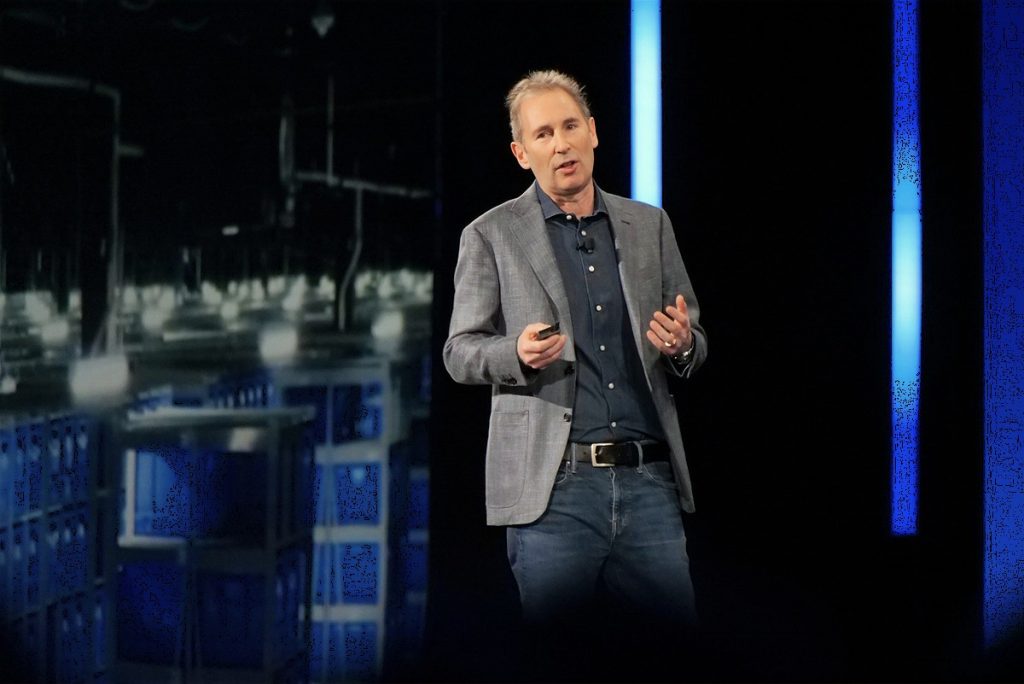Amazon’s Major Corporate Restructuring Amid AI Transformation
In a significant move that reflects the changing technological landscape, Amazon announced on Tuesday it would cut approximately 14,000 corporate jobs as part of a broader strategy to streamline operations and adapt to the artificial intelligence revolution. This initial reduction, confirmed in a message to employees by Amazon’s human resources chief Beth Galetti, marks what could be the beginning of a more extensive restructuring effort potentially continuing into 2026. According to Reuters reporting, the total number of layoffs could reach as high as 30,000, which would exceed the company’s previous record of 27,000 positions eliminated in 2023. This restructuring represents Amazon CEO Andy Jassy’s vision to transform the tech giant into what he calls “the world’s largest startup” by reducing bureaucracy and management layers that have accumulated during the company’s rapid growth phase. The timing of this announcement, coming just days before Amazon’s third-quarter earnings report, suggests a strategic move to demonstrate fiscal responsibility to investors even as the company continues massive capital investments in AI infrastructure.
The layoffs are grounded in Amazon’s strategic pivot toward artificial intelligence, which Galetti described as “the most transformative technology we’ve seen since the Internet.” This perspective underscores how fundamentally Amazon believes AI will reshape its business operations and the broader technology landscape. The company aims to reorganize with “fewer layers and more ownership” to increase agility and responsiveness to customer needs. This restructuring reflects a calculated reallocation of resources toward what Amazon considers its most promising opportunities in the AI era, suggesting that teams and roles not aligned with this new direction are vulnerable to cuts. While representing approximately 4% of Amazon’s corporate workforce (which numbered around 350,000 in early 2023), these reductions are a much smaller fraction of Amazon’s total workforce of 1.55 million people, which includes warehouse workers and other non-corporate employees. Nevertheless, the significance of these cuts lies not just in their numerical impact but in what they signal about Amazon’s future direction and organizational philosophy.
The Seattle region, home to Amazon’s original headquarters and its largest concentration of corporate employees, will likely bear a disproportionate impact from these layoffs. This comes at a challenging time for the local tech ecosystem, which has already weathered significant workforce reductions from Microsoft and other major employers adapting to economic uncertainty and embracing AI-driven automation. For displaced tech workers in the region, job searches have become increasingly competitive compared to previous cycles when the technology sector remained relatively insulated from broader economic pressures. The timing is particularly challenging as many companies are simultaneously implementing hiring freezes while exploring how AI might transform their workforce needs. This regional concentration of tech layoffs raises questions about the potential economic ripple effects on Seattle’s housing market, local businesses, and public services that have grown dependent on the tech sector’s prosperity.
These workforce reductions must be understood in the context of Amazon’s post-pandemic business strategy. After an unprecedented hiring spree during the COVID-19 era when e-commerce demand surged, Amazon, like many tech companies, now finds itself recalibrating its workforce for a different economic environment. CEO Andy Jassy, who succeeded founder Jeff Bezos in mid-2021, has been vocal about his intention to make Amazon more efficient, even stating in a June memo that he expected the company’s corporate workforce to naturally shrink over time as AI drives productivity gains. According to Bloomberg reporting, Jassy has privately expressed frustration that parts of Amazon remain “unwieldy” despite previous restructuring efforts in 2023. This suggests the current layoffs represent not just a response to immediate economic conditions but a more fundamental rethinking of how Amazon should operate in an AI-augmented future where fewer human workers may be needed for certain functions.
Interestingly, the scale of these layoffs may have been influenced by unexpected workforce retention patterns. Reuters cited sources claiming that Amazon’s strict return-to-office policy, which requires employees to be present five days a week, failed to trigger the voluntary departures that management might have anticipated. This suggests the company may have hoped natural attrition would reduce the need for formal layoffs. For employees affected by these cuts, Amazon is offering a 90-day period to find new positions within the company, though this timeframe may vary based on local employment laws. Those unable or unwilling to secure alternative roles at Amazon will receive severance packages including outplacement services and continued health insurance benefits. This structured approach to managing departures indicates Amazon’s attempt to balance workforce reduction goals with maintaining its employer brand during a challenging transition.
While reducing headcount in some areas, Galetti’s message notably indicated that Amazon will continue hiring in “key strategic areas,” highlighting the selective nature of these cuts rather than an across-the-board reduction. This nuanced approach reflects the complex reality of Amazon’s current position: simultaneously trimming expenses through job cuts while making massive investments in AI infrastructure and strategic growth initiatives. The company faces the delicate balancing act of satisfying Wall Street’s demand for operational efficiency while maintaining the innovation capacity and talent pool necessary to compete in rapidly evolving markets. As these layoffs unfold across multiple countries and business units, they will test Amazon’s ability to preserve employee morale and productivity during a period of significant organizational change. More fundamentally, they represent a high-stakes bet on how AI will reshape the nature of work within one of the world’s most influential companies—a transformation with implications far beyond Amazon itself for how large organizations structure themselves in the emerging AI economy.


